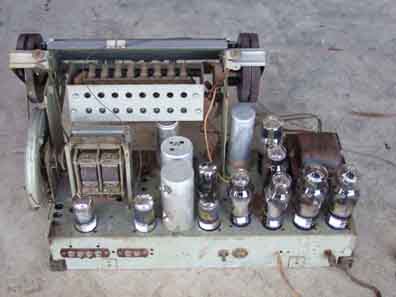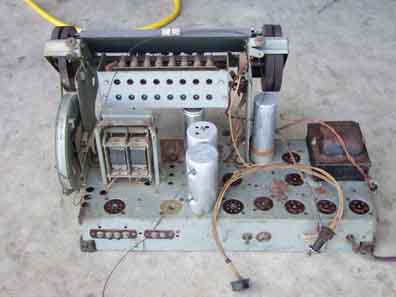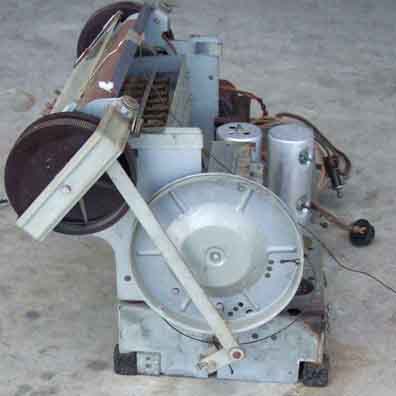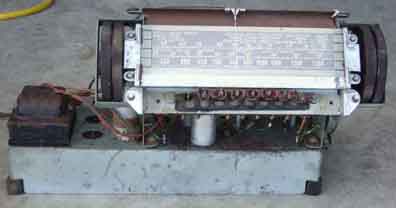Posts: 348
Threads: 48
Joined: Oct 2013
City: Tioga, Texas, USA





All the chassis and tubes were covered with dried mouse pee. I took the time to remove tubes one at a time and cleaned them with a soft brush and water being careful with the lettering. Naturally some of the old painted on lettering did come off, especially on the Loctal Philco OEM tubes in the front end and IF/Audio Detector circuit. The other tubes were somewhat easier to clean and all of them did have etched IDs on either the top of the glass or on the side. I managed to get the pee and debris off of the IF transformers and the electrolytic filter capacitors. The electrolytics are original, so they will have to be replaced first. I did look at the audio output transformer and found that it has already been replaced some time in the past. The transformer that was used is a Stancor A-3823. I will have to look that one up to see what its ratings are. Just looking at the illustration of the underneath of the chassis in Ryder publications, it appears physically smaller than the transformer that Philco used. I did check the replacement audio transformer and it does have continuity plate to plate of the 42 tubes.
This chassis has 4 rubber cushions that are at the corners of the chassis. So far I have not located cushions that look like these in my searches.
I am not sure if the radio originally had an on/off switch using the first push button or not. This radio had a toggle switch that was mounted in the cabinet just at the top of where the speaker baffle is mounted, but is in a vertical hole up through the wood of the horizontal bracing. The switch points downward and is hardly visible unless you really look for it. I found this when the chassis would not come out after all the chassis screws were removed and the two dial plate screws had been removed.
I will post some photographs.
Joe
(This post was last modified: 11-19-2013, 12:04 AM by
Joeztech.)



![[-] [-]](https://philcoradio.com/phorum/images/bootbb/collapse.png)


